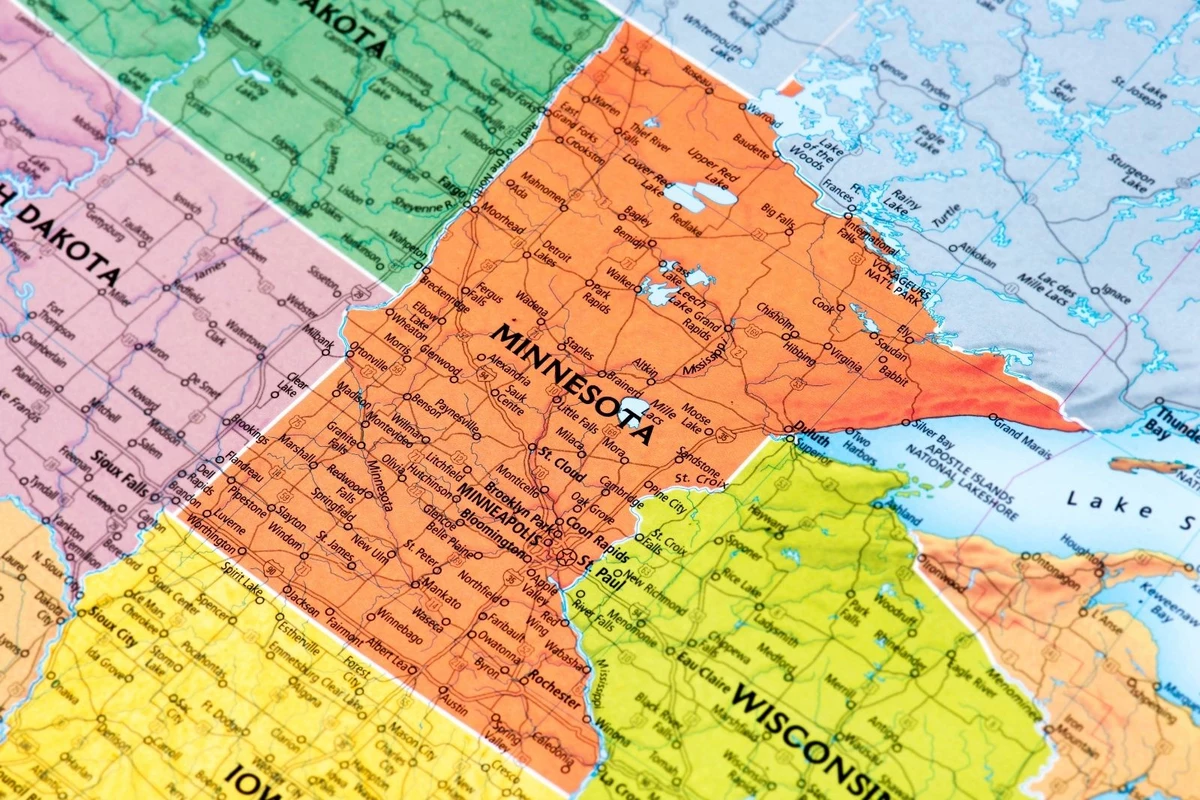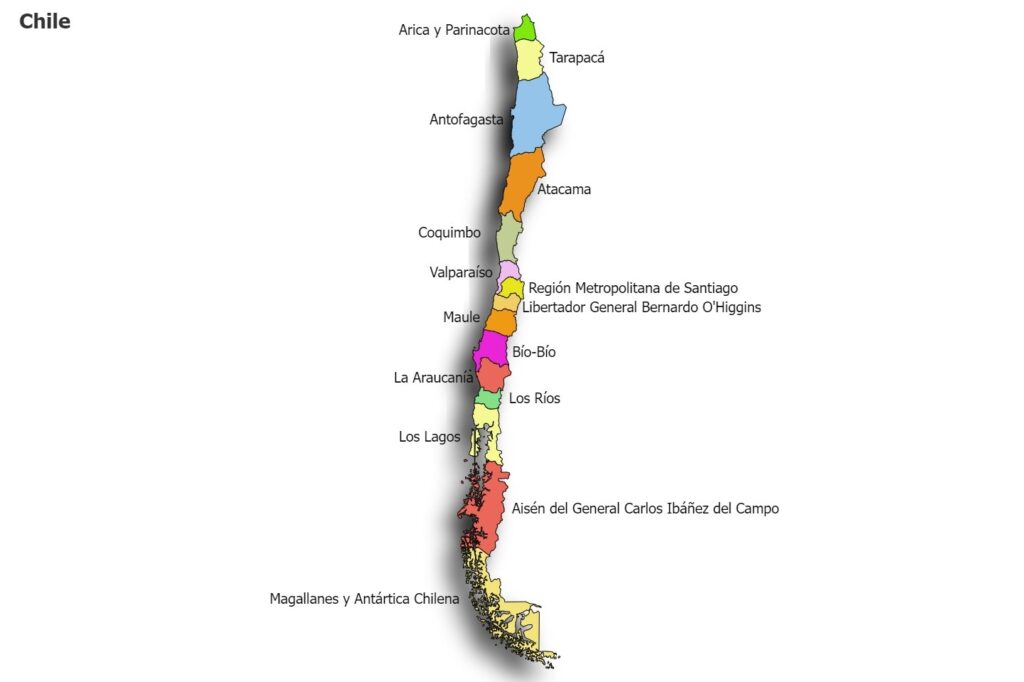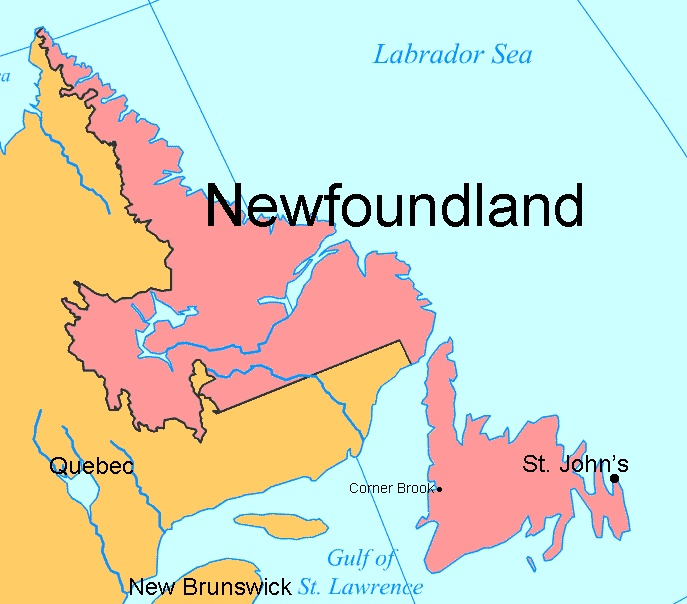Introduction
Minnesota, often referred to as the “Land of 10,000 Lakes,” is a state rich in natural beauty, cultural heritage, and economic significance. Located in the Upper Midwest of the United States, it is known for its stunning landscapes, vibrant cities, and historical landmarks. This comprehensive guide explores the geography, history, economy, culture, and notable features of Minnesota, providing detailed maps and facts to enhance your understanding of this fascinating state.
Understanding Minnesota
Geography and Overview
Minnesota is the 12th largest state in the United States, covering an area of approximately 86,936 square miles. It is bordered by Canada to the north, Iowa to the south, Wisconsin to the east, and North Dakota and South Dakota to the west. The state is divided into 87 counties and has a diverse topography that includes forests, prairies, and numerous lakes and rivers.
Climate
Minnesota experiences a continental climate characterized by cold winters and warm summers. The state is known for its significant temperature variations, with average winter temperatures ranging from -10°F to 24°F and summer temperatures ranging from 55°F to 80°F. Snowfall is common in winter, especially in the northern regions.
Natural Features
Minnesota’s landscape is incredibly diverse, featuring several notable natural features:
Lakes and Rivers
Minnesota is home to more than 11,000 lakes, including the famous Lake Superior, the largest of the Great Lakes. Major rivers include the Mississippi River, which originates in Minnesota, and the Minnesota River.
Forests
The state boasts extensive forests, particularly in the northern regions, such as the Superior National Forest and the Chippewa National Forest.
Prairies
Southern and western Minnesota are characterized by prairie landscapes, which are remnants of the vast grasslands that once covered the area.
Historical Context
Early History
Before European settlers arrived, Minnesota was inhabited by various Native American tribes, including the Dakota (Sioux) and Ojibwe (Chippewa). These indigenous peoples had rich cultures and traditions, which continue to influence the state today.
European Settlement
European exploration began in the 17th century, with French fur traders and missionaries being among the first to explore the region. In the 19th century, Minnesota became a hub for fur trading, and European settlers started to establish permanent settlements.
Statehood and Development
Minnesota became the 32nd state of the United States on May 11, 1858. The development of railroads and the discovery of iron ore in the Mesabi Range in the late 19th and early 20th centuries spurred economic growth. The state played a significant role in agriculture, particularly in the production of wheat and other grains.
Modern Era
In the 20th century, Minnesota continued to grow economically and culturally. The Twin Cities of Minneapolis and Saint Paul emerged as major metropolitan areas, driving the state’s economic and cultural development. Minnesota also became known for its high quality of life, excellent education system, and strong healthcare services.
Maps of Minnesota
Political Map
A political map of Minnesota shows the state’s administrative divisions, including its counties, major cities, and state capital. The state capital is Saint Paul, while Minneapolis is the largest city.
Physical Map
A physical map of Minnesota highlights the state’s natural features, such as lakes, rivers, forests, and topographical variations. Key features include Lake Superior, the Mississippi River, and the Mesabi Range.
Climate Map
A climate map of Minnesota illustrates the state’s climatic zones, showcasing the variation in temperature and precipitation across different regions. Northern Minnesota tends to be colder and snowier, while southern Minnesota experiences milder winters and warmer summers.
Road Map
A road map of Minnesota provides detailed information about the state’s transportation network, including highways, interstates, and major roads. Key routes include Interstate 35, which runs north-south, and Interstate 94, which runs east-west.
Fun Facts About Minnesota
Land of 10,000 Lakes
Minnesota is famously known as the “Land of 10,000 Lakes,” although the actual number of lakes is over 11,000. These lakes offer numerous recreational opportunities, including fishing, boating, and swimming.
Birthplace of Iconic Brands
Minnesota is the birthplace of several iconic brands, including Target, Best Buy, and General Mills. These companies have their headquarters in the Twin Cities area and contribute significantly to the state’s economy.
Cultural Contributions
Minnesota has a rich cultural scene, with contributions to music, literature, and the arts. The state is home to the renowned Guthrie Theater, the Minnesota Orchestra, and the Minneapolis Institute of Art. It is also the birthplace of famous musicians like Prince and Bob Dylan.
Educational Excellence
Minnesota is known for its excellent education system, with numerous highly regarded public and private schools, colleges, and universities. The University of Minnesota, with its main campus in Minneapolis, is a leading research institution.
Diverse Wildlife
Minnesota’s diverse ecosystems support a wide range of wildlife, including black bears, moose, wolves, and bald eagles. The state has several wildlife refuges and parks dedicated to preserving these species and their habitats.
Exploring Minnesota’s Regions
The Twin Cities
The Twin Cities of Minneapolis and Saint Paul form the largest metropolitan area in Minnesota. Known for their vibrant cultural scene, diverse communities, and economic significance, the Twin Cities are a major hub for business, education, and the arts.
Minneapolis
Minneapolis, the largest city in Minnesota, is known for its modern skyline, extensive parks and lakes, and thriving arts scene. Key attractions include the Minneapolis Sculpture Garden, the Walker Art Center, and the historic Mill District.
Saint Paul
Saint Paul, the state capital, is known for its historic architecture, cultural institutions, and political significance. Notable landmarks include the Minnesota State Capitol, the Science Museum of Minnesota, and the Cathedral of Saint Paul.
Northern Minnesota
Northern Minnesota is characterized by its dense forests, numerous lakes, and outdoor recreational opportunities. It is home to the Boundary Waters Canoe Area Wilderness, a popular destination for canoeing and camping.
Duluth
Duluth, located on the shores of Lake Superior, is a major port city known for its maritime heritage and stunning natural scenery. The city offers attractions such as the Lakewalk, the Great Lakes Aquarium, and the Aerial Lift Bridge.
Central Minnesota
Central Minnesota features a mix of forests, lakes, and agricultural land. The region is known for its small towns, outdoor activities, and historical sites.
Brainerd Lakes Area
The Brainerd Lakes Area is a popular vacation destination known for its resorts, golf courses, and water activities. Visitors can enjoy fishing, boating, and exploring the numerous lakes and parks in the area.
Southern Minnesota
Southern Minnesota is primarily agricultural, with vast farmlands and rolling prairies. The region is also home to several historic towns and cultural sites.
Rochester
Rochester is the third-largest city in Minnesota and is known worldwide for the Mayo Clinic, a leading medical and research institution. The city also offers cultural attractions such as the Rochester Art Center and the Quarry Hill Nature Center.
Economy of Minnesota
Key Industries
Minnesota has a diverse economy, with key industries including agriculture, manufacturing, healthcare, and technology.
Agriculture
Agriculture has been a cornerstone of Minnesota’s economy for centuries. The state is a leading producer of corn, soybeans, sugar beets, and livestock. The fertile soil and favorable climate contribute to the state’s agricultural success.
Manufacturing
Minnesota has a strong manufacturing sector, producing a wide range of goods, including machinery, food products, electronics, and medical devices. The state is home to several major manufacturing companies and research facilities.
Healthcare
The healthcare industry is a significant contributor to Minnesota’s economy, with the Mayo Clinic being a prominent institution. The state has a robust healthcare system, known for its high-quality care and medical research.
Technology
Minnesota’s technology sector is growing rapidly, with a focus on software development, medical technology, and renewable energy. The Twin Cities area is a hub for tech startups and innovation.
Economic Strengths
Minnesota’s economy is characterized by its resilience, diversity, and high quality of life. The state’s strong education system, skilled workforce, and commitment to innovation contribute to its economic success.
Culture and Society
Festivals and Events
Minnesota hosts a variety of festivals and events throughout the year, celebrating its cultural diversity, history, and community spirit.
Minnesota State Fair
The Minnesota State Fair, held annually in Saint Paul, is one of the largest and most popular state fairs in the United States. It features agricultural exhibits, live entertainment, food vendors, and amusement rides.
Winter Carnival
The Saint Paul Winter Carnival is a historic event that celebrates winter with ice sculptures, parades, and winter sports. It is one of the oldest winter festivals in the United States, dating back to 1886.
Arts and Entertainment
Minnesota has a vibrant arts and entertainment scene, with numerous theaters, museums, and music venues.
Guthrie Theater
The Guthrie Theater in Minneapolis is a renowned regional theater known for its innovative productions and striking architecture. It hosts a variety of plays, musicals, and performances throughout the year.
Minnesota Orchestra
The Minnesota Orchestra, based in Minneapolis, is one of the top symphony orchestras in the country. It performs classical and contemporary music and is known for its educational outreach programs.
Sports and Recreation
Minnesota residents are passionate about sports and outdoor activities. The state offers a wide range of recreational opportunities, from professional sports to hiking and fishing.
Professional Sports Teams
Minnesota is home to several professional sports teams, including the Minnesota Vikings (NFL), Minnesota Twins (MLB), Minnesota Timberwolves (NBA), and Minnesota Wild (NHL). These teams have dedicated fan bases and play in state-of-the-art facilities.
Outdoor Activities
Minnesota’s natural beauty provides endless opportunities for outdoor activities, including hiking, fishing, boating, and skiing. The state’s extensive network of parks and trails attracts nature enthusiasts and adventure seekers.
Notable Landmarks and Attractions
Mall of America
Located in Bloomington, the Mall of America is the largest shopping mall in the United States. It features over 500 stores, an indoor amusement park, an aquarium, and numerous dining options, making it a major tourist attraction.
Split Rock Lighthouse
Split Rock Lighthouse, situated on the North Shore of Lake Superior, is one of Minnesota’s most iconic landmarks. Built in 1910, it offers stunning views of the lake and is a popular spot for history enthusiasts and photographers.
Itasca State Park
Itasca State Park, located in northern Minnesota, is home to the headwaters of the Mississippi River. Visitors can walk across the river at its source and explore the park’s scenic trails, lakes, and forests.
Voyageurs National Park
Voyageurs National Park, in northern Minnesota, is known for its interconnected waterways, pristine lakes, and abundant wildlife. It is a haven for canoeing, kayaking, and fishing, as well as camping and hiking.
Education and Research
University of Minnesota
The University of Minnesota is a leading public research university with campuses in Minneapolis and Saint Paul. It offers a wide range of academic programs and is known for its research contributions in various fields, including medicine, engineering, and agriculture.
Mayo Clinic
The Mayo Clinic, based in Rochester, is a world-renowned medical center and research institution. It is recognized for its high-quality patient care, innovative research, and medical education programs.
Public Schools
Minnesota’s public school system is known for its high standards and excellent performance. The state consistently ranks among the top in the nation for education quality, with a strong emphasis on student achievement and teacher quality.
Conclusion
Minnesota is a state of incredible diversity and richness, offering a unique blend of natural beauty, cultural heritage, and economic vitality. From the bustling Twin Cities to the tranquil wilderness of the north, Minnesota has something to offer everyone. Its maps and facts reveal a state that is not only geographically diverse but also culturally and economically significant. Whether you’re exploring its lakes and forests, enjoying its vibrant arts scene, or learning about its history and contributions, Minnesota is a state that captivates and inspires.
What are some facts about Minnesota geography
Minnesota is known for its diverse geography, including over 11,000 lakes, the headwaters of the Mississippi River, and extensive forests in the northern part of the state. The state also features prairies in the southwest and rugged terrain in the northeast, particularly along the North Shore of Lake Superior.
What is Minnesota famously known for
Minnesota is famously known for its lakes, earning it the nickname “Land of 10,000 Lakes.” It is also renowned for its cultural landmarks, such as the Mall of America, its vibrant arts scene, and being the birthplace of iconic musicians like Prince.
What are the major landforms in Minnesota
Major landforms in Minnesota include the vast North Woods, the fertile plains of the Red River Valley, the Mississippi River, the bluffs along the Mississippi River Valley, and the rugged cliffs and hills along the North Shore of Lake Superior.
Is Minnesota flat or mountains
Minnesota is generally flat to gently rolling, with no true mountains. The highest point is Eagle Mountain, which stands at 2,301 feet. The state’s topography varies from the flat prairies in the southwest to the rugged, forested areas in the northeast.
Which region is Minnesota located in
Minnesota is located in the Upper Midwest region of the United States, sharing borders with Canada to the north, Iowa to the south, Wisconsin to the east, and North Dakota and South Dakota to the west.
What food is Minnesota known for
Minnesota is known for several iconic foods, including wild rice dishes, tater tot hotdish, lutefisk, and walleye. The state also has a strong Scandinavian culinary influence, evident in foods like lefse and krumkake.
What is the main religion in Minnesota
The main religion in Minnesota is Christianity, with the largest denominations being Roman Catholicism and various Protestant branches, including Lutheranism, which has a significant presence due to the state’s Scandinavian heritage.
What is the climate in Minnesota
Minnesota has a continental climate, characterized by cold winters and warm summers. Winters can be severe, with temperatures often dropping below freezing, while summers are generally warm and humid, particularly in the southern part of the state.
What is the culture of Minnesota
The culture of Minnesota is a blend of Scandinavian, German, and Native American influences, reflected in its traditions, festivals, and cuisine. The state is known for its strong sense of community, emphasis on education, and a rich arts scene that includes theater, music, and visual arts.
What’s the coldest month in Minnesota
The coldest month in Minnesota is typically January, when temperatures can plummet to well below freezing. The state experiences extreme cold during this time, especially in the northern regions, with frequent snowfall and icy conditions.
- The Red Scare And McCarthyism In The USA! - August 19, 2024
- The Elite Special Forces Of Ancient Greece! - August 18, 2024
- Which US State Has The Most Venomous Reptiles? - August 18, 2024




